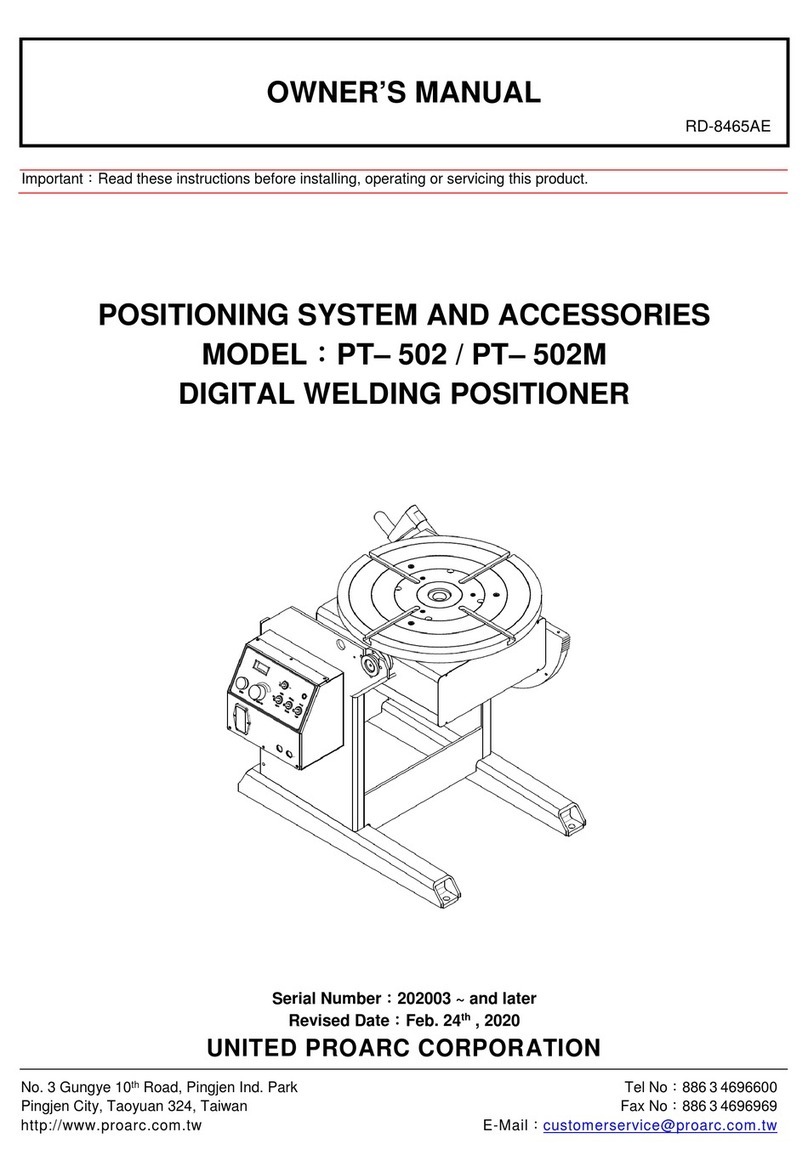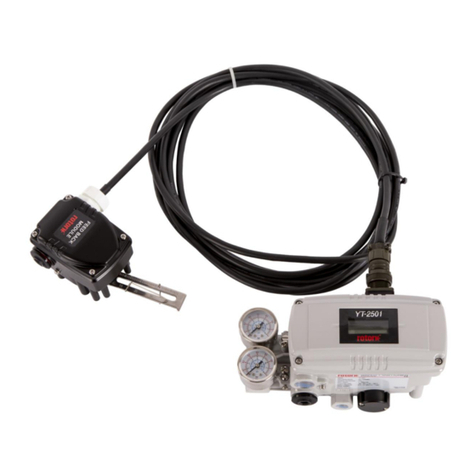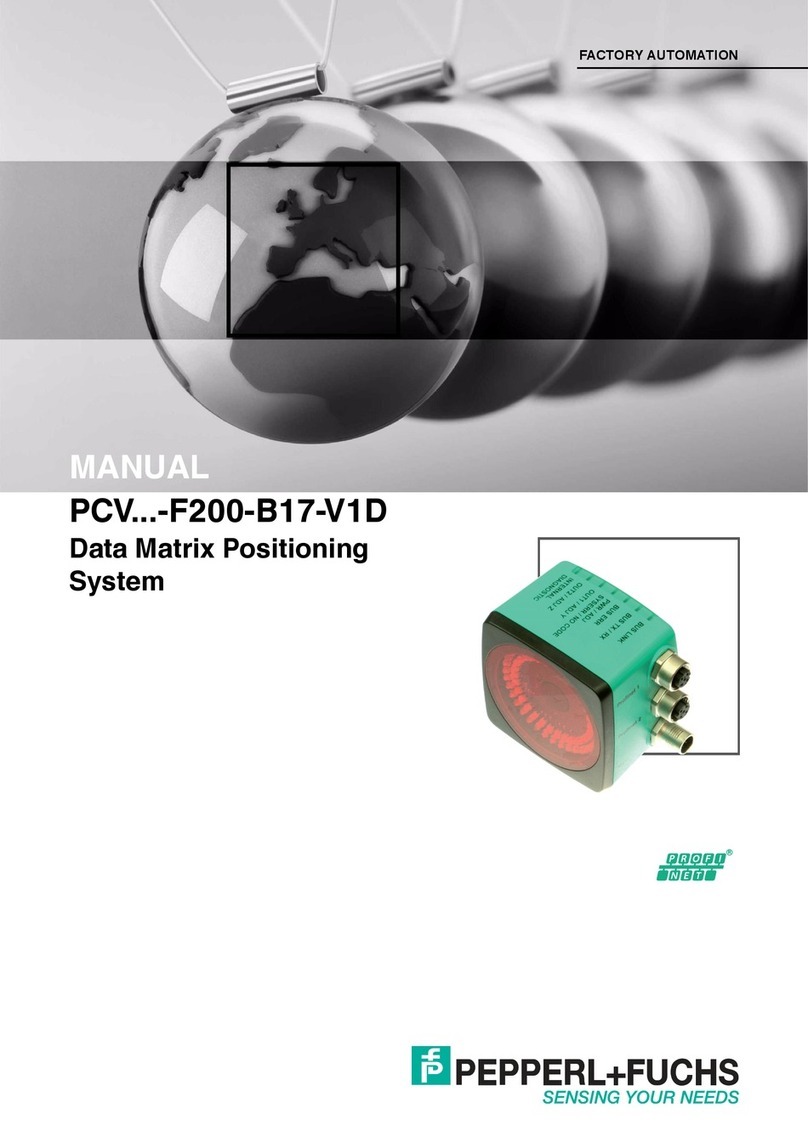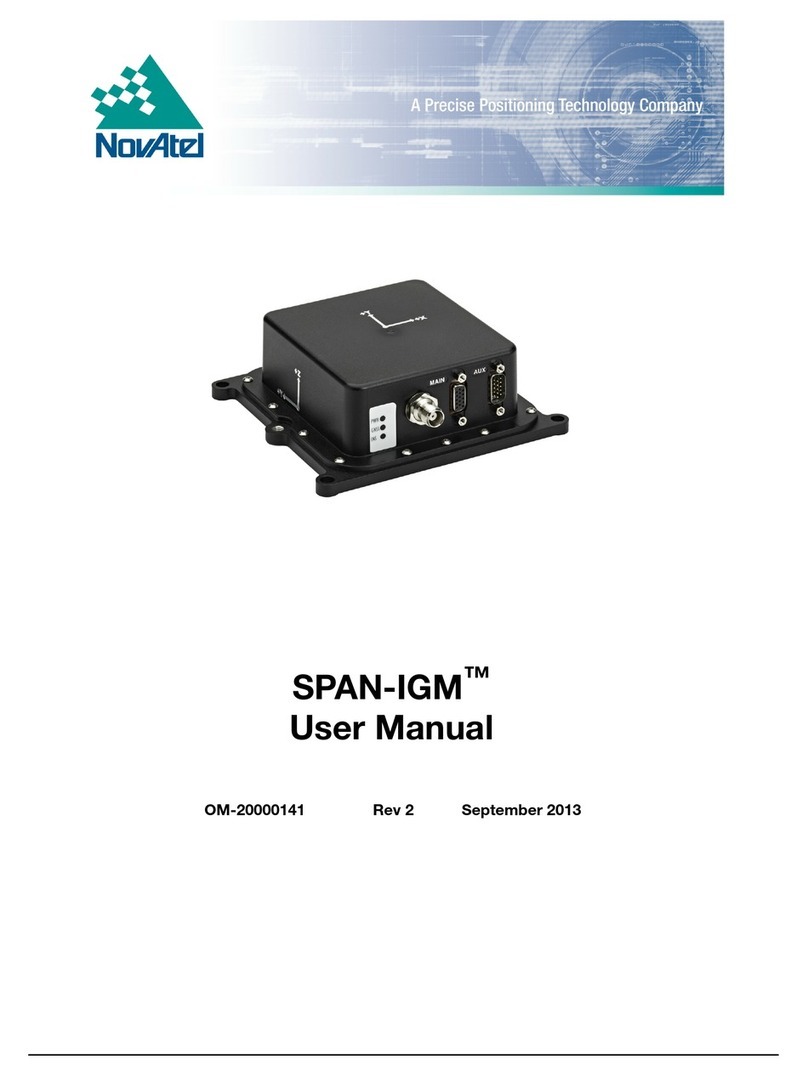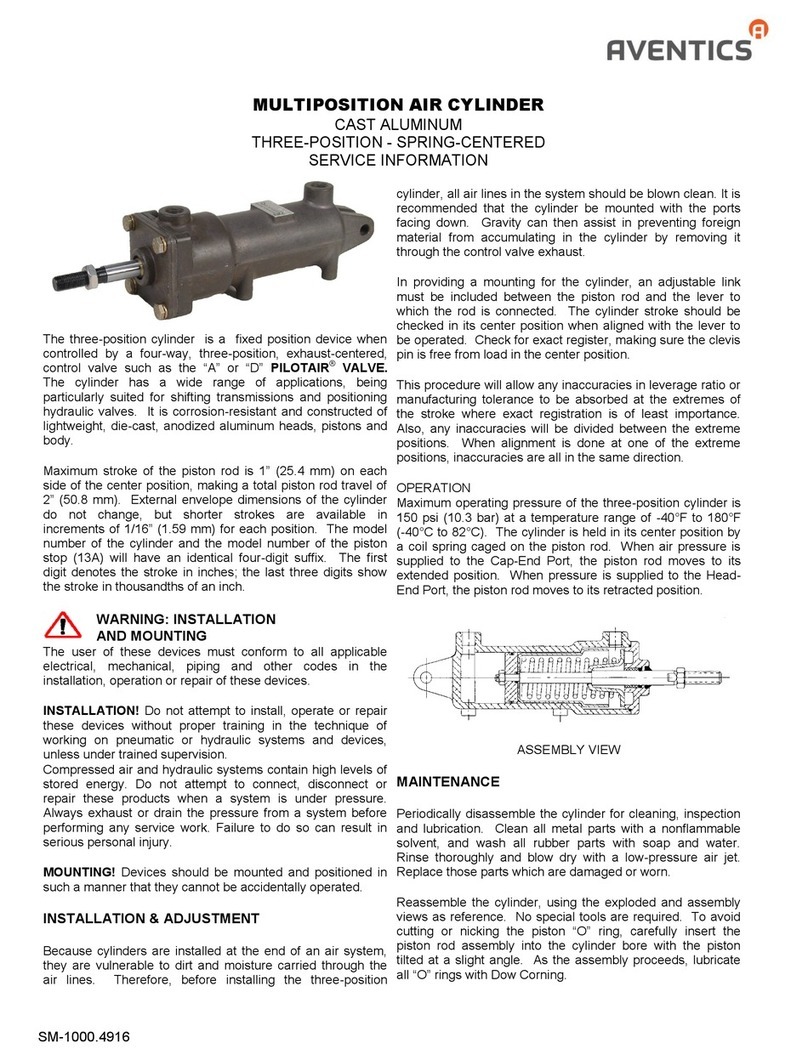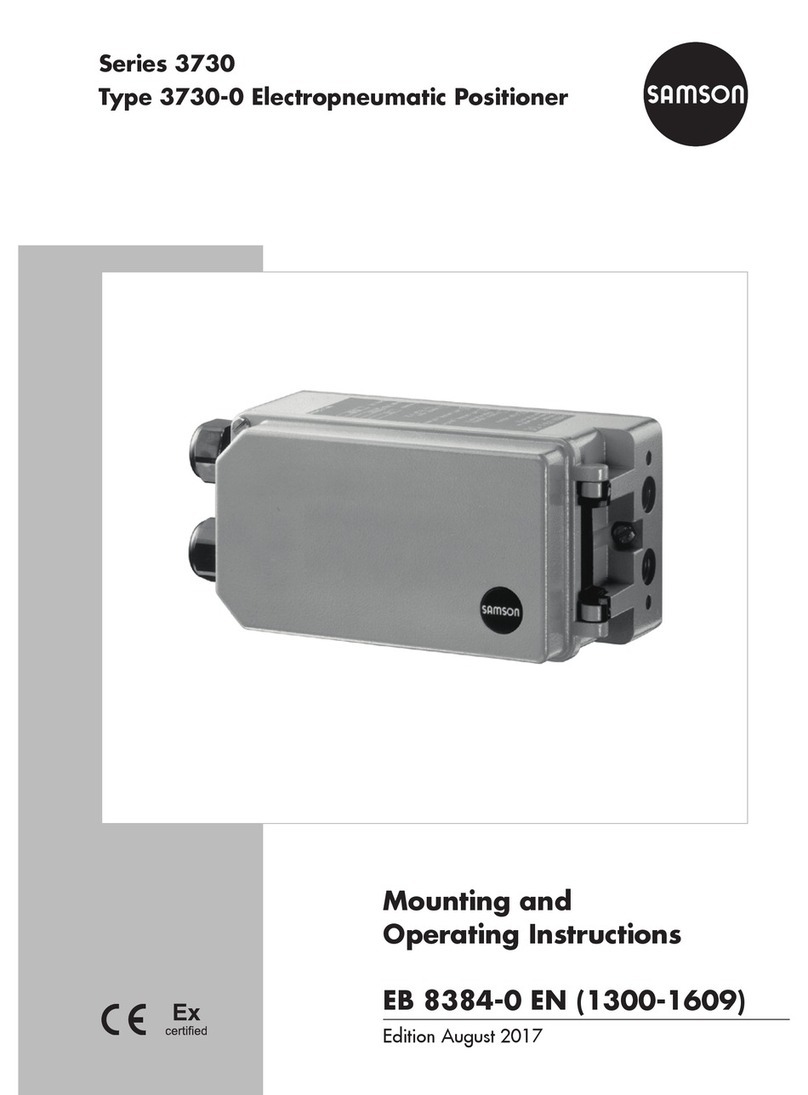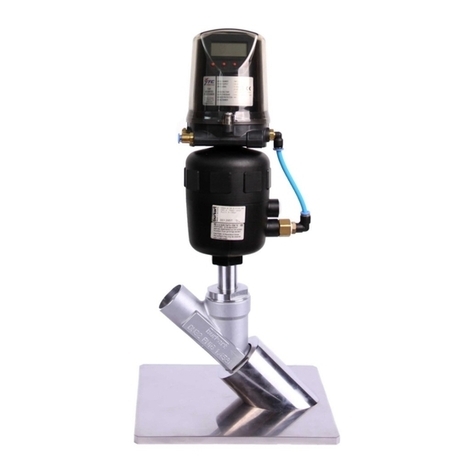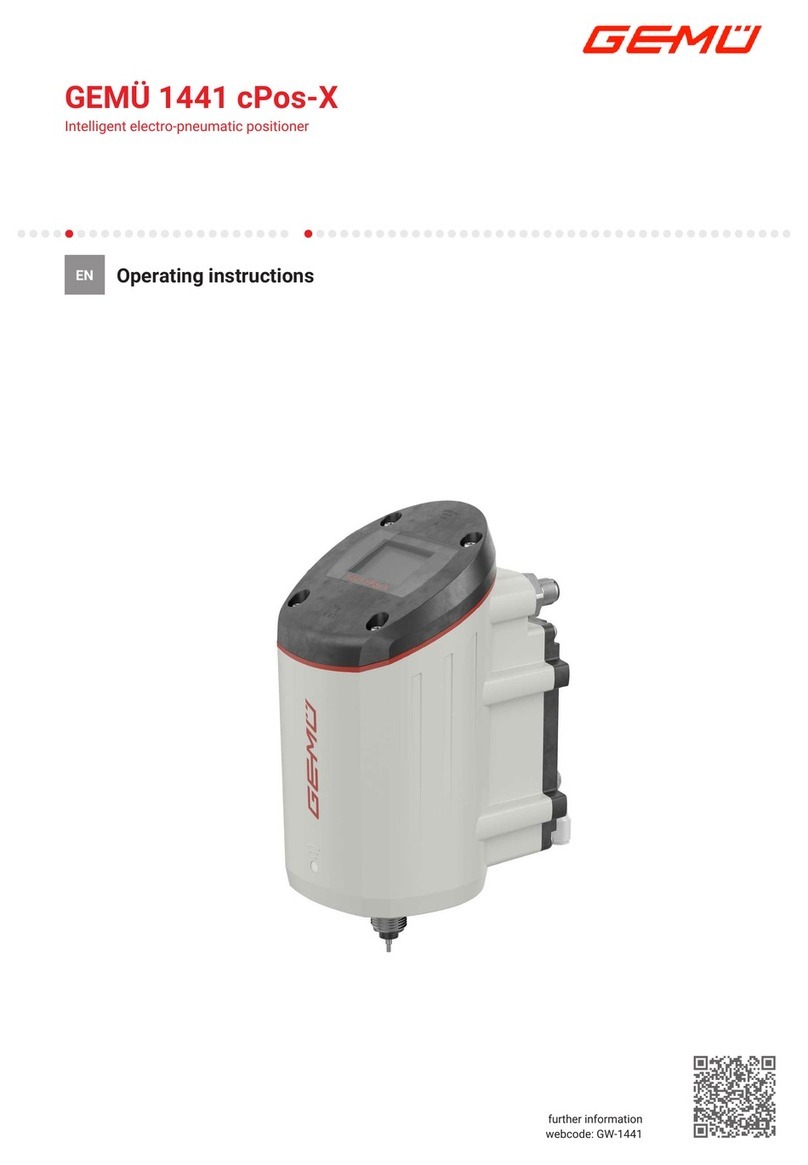
3
Mounting Procedures
1. On the V-400,using the two M5 x 20 mm screws and the two M5 nuts,
mount the positioner and mounting bracket through the two lower slots and
into the lower set of mounting holes on the actuator. Skip to Step 3.
2. On the V-500, using the two M5 x 20 mm screws and the two M5 nuts,
mount the positioner and mounting bracket through the two upper slots and
into the two mounting holes on the actuator.
3. Attach the positioner spring to the positioner arm (see Adjustments
section).
4. On the V-400 using the two set screws, attach the 1/2 in. diameter
feedback arm assembly, finger tight, to the valve stem extension. The pull
plate should be parallel and even with the positioner arm. Skip to Step 6.
5. On the V-500 using the two set screws, attach the 3/8 in. diameter
feedback arm assembly, finger tight, to the valve stem. The pull plate
should be parallel and even with the positioner arm.
6. Attach the other end of the positioner spring to the pull plate.
7. Slide the feedback arm assembly until the spring is just snug and tighten
the set screws with a screwdriver.
8. Attach the air tube from the actuator to the positioner.
Adjustments
The holes in the positioner arm determine the operating span. The hole nearest
the pilot end represents an operating span of 3 psi (21 kPa), and the hole
furthest from the pilot end represents an operating span of 13 psi (91 kPa).
The starting point adjustment is the brass screw located on the positioner
(under the cover, refer to Figure 1). Turning the screw Counterclockwise
(CCW) will increase the start point, turning it Clockwise (CW) will decrease the
starting point.
Note: The other three screws on the positioner are factory settings and
should not be adjusted. When adjusting the positioner starting point,
keep in mind that the sum of the starting pressure and the span must
not exceed the supply pressure. If the sum exceeds the supply
pressure, the actuator will not move over its full stroke.

